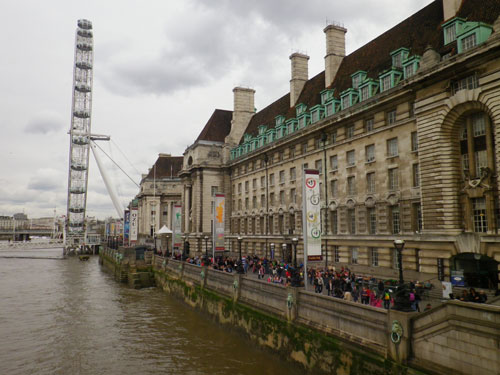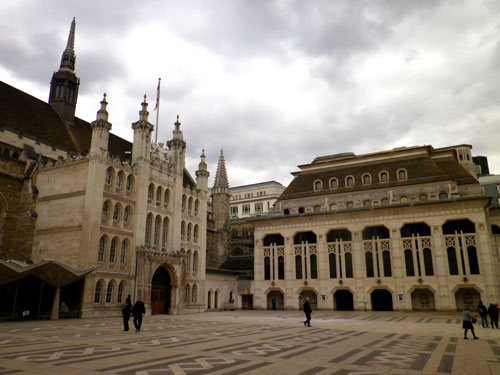Clocks. That’s what horology is. Today I saw a lot of them. A-ticking and a-tocking; a great clamour there was. Fortunately none of them struck the hour as the room wasn’t that big.
Of course, I was in London for lunch with Mirinda. We were going to meet at the D’Oyly Carte sundial outside the Savoy but a load of loud and obnoxious drunks (of both sexes) had taken up residence on the semi-circular benches so I sat reading in front of Arthur Sullivan instead. It was very pleasant surrounded by all manner of flowering plants. It was almost possible to ignore the traffic.
We wandered up to an outdoor cafe in the Embankment Park and had a BLT and a CLT (that’s chicken rather than bacon) before going for a lovely walk by Cleopatra’s Needle, along the north bank, crossing Westminster Bridge and then back across the river to Embankment.
It wasn’t the nicest of days (a bit grey) but it didn’t rain and it was a lovely walk. Ignoring the noise, of course. And the thousands of tourists which coincides with the bloody extra long Easter holidays for kids.
After Mirinda returned to work I hopped on the Tube and headed for Bank. From here, I walked up to Guildhall where the Worshipful Company of Clockmakers museum is housed. I’d researched a chap at work last week who was a big clock and watch maker and found out about the museum then. So, of course I had to go. Plus the fact that I will be graduating at Guildhall in May, I thought it would be nice to work out how to get there.
I’ve been a few times before but not recently. Not that I needed an excuse to go to the clock museum. I was very keen on doing that!
The clockmaker’s company was granted its charter in 1631 by Charles I. Prior to this, anyone involved with the making of timepieces came under the blacksmith’s company. I guess because they worked with metal rather than a forge. Anyway, they split and it’s been that way ever since.
The museum is small but wonderfully obscure. The history of clocks and watches is spread out in a series of display cases showing some wonderful antique timepieces. As you walk around you are also taken, century by century, through the world of time.
Sadly the bookshop was closed so I was unable to obtain a guidebook. There’s also no photographs allowed. For these reasons I can only relate one thing. (Like Homer, I have only room for one fact because each new one pushes an older one out.)
It seems that the British manufacturing industry has always been a victim of its own success. Because craftsmanship, skill and care are expensive commodities, once the first few products are created, someone from the continent will always make them cheaper. The market then buys the cheaper mass produced option and the home grown industry gets more and more exclusive before disappearing up it’s own workshop.
This is exactly what happened to British clock and watch makers. They were world leaders at one time. They produced the most amazing clocks and watches; inventing new movements and more accuracy. But then the Swiss stole the entire market. Actually that’s not entirely true but they did their fair share and it sort of explains why they are now world renowned for watches.
Still, it is a wonderful museum and very quiet – clearly there’s not a lot of interest in horology. I was alone for all except the last few minutes. The museum has a website here.
2021 UPDATE: At some point, when I was still working there, the Horological Museum moved into the Science Museum as a permanent exhibit, as stated in the link above.




